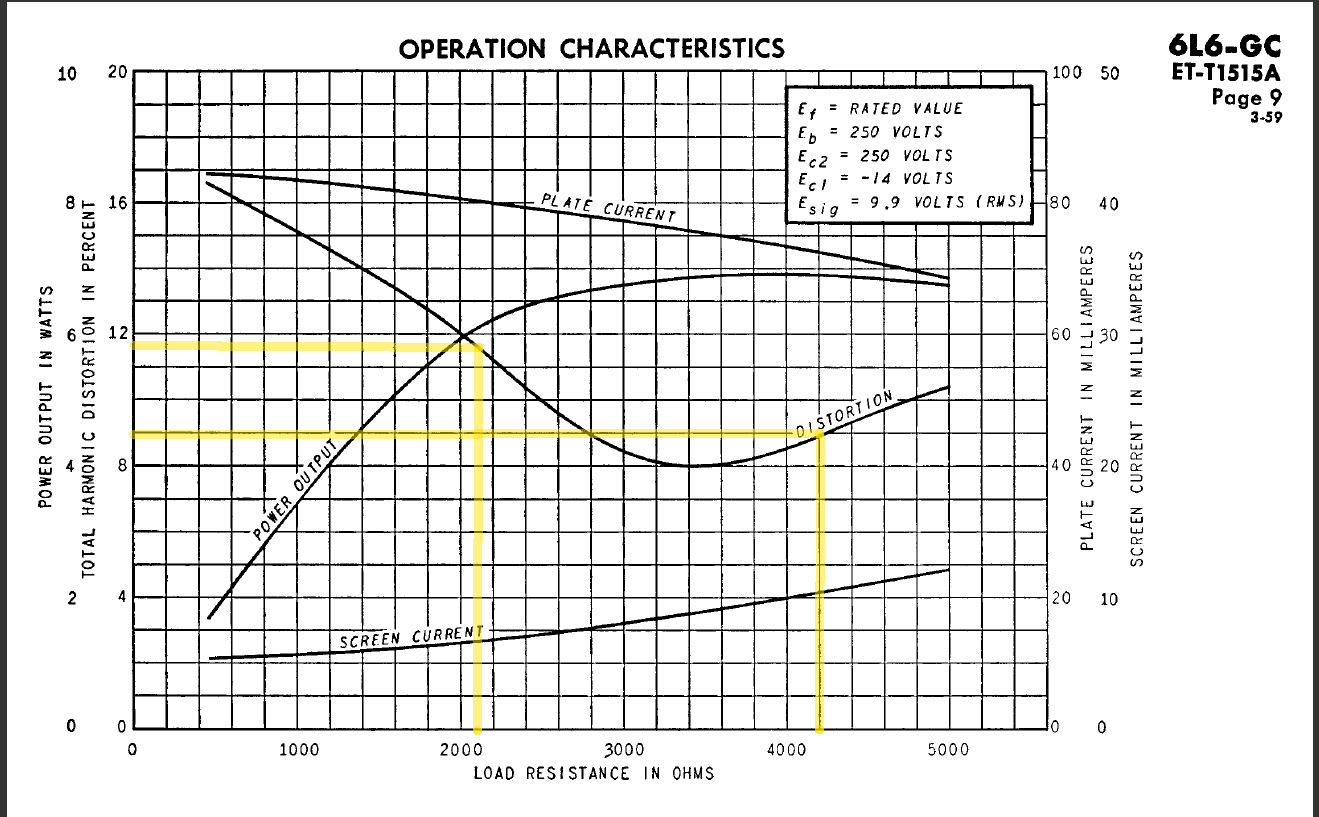If you want to talk theory, here's an Operational Characteristics plot for the General Electric 6L6GC. It shows the relative distortion levels for 4k2 loading vs. 2k1 loading.

As you can see:
a. Plate current will be higher (though not as much as you might expect, since the slope of the plate current line is low.)
b. Screen current is lower (again, not a whole lot of slope on the curve)
c. Power output won't change much (still in the flat portion of the power curve)
d. Distortion is higher: moves up from 9% to 11% under the stated test conditions.
Granted, these test conditions are at Eb = 250, so they won't exactly match your situation, but they should give you leg up in understanding that the load impedance might not deserve all of the blame that it's getting in this thread. If anything, the data shows that the 6L6 is very tolerant of a 50% mismatch to the downside. Of course, we've always known this.
If you really want to address this answer form a theory standpoint, it would help to take some real world measurements from the unit under test and draw the load lines rather than guessing about what's going on.
As you can see:
a. Plate current will be higher (though not as much as you might expect, since the slope of the plate current line is low.)
b. Screen current is lower (again, not a whole lot of slope on the curve)
c. Power output won't change much (still in the flat portion of the power curve)
d. Distortion is higher: moves up from 9% to 11% under the stated test conditions.
Granted, these test conditions are at Eb = 250, so they won't exactly match your situation, but they should give you leg up in understanding that the load impedance might not deserve all of the blame that it's getting in this thread. If anything, the data shows that the 6L6 is very tolerant of a 50% mismatch to the downside. Of course, we've always known this.
If you really want to address this answer form a theory standpoint, it would help to take some real world measurements from the unit under test and draw the load lines rather than guessing about what's going on.


 (cue synchronized group face-palm now)
(cue synchronized group face-palm now)
Comment